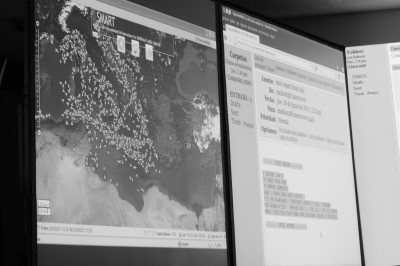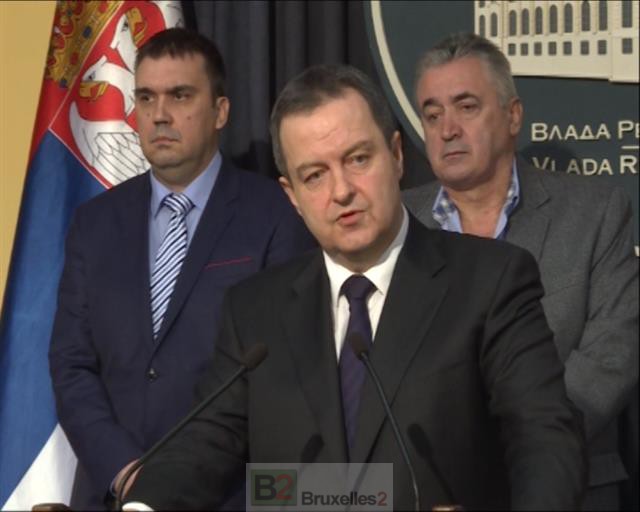Marsur, the smart interface that replaces the “22 in Asnières”
(BRUSSELS2) A large room, filled with officers and specialists in maritime issues from a conference centre. On stage, six podiums held by officers from the six countries taking part in the experiment piloting their own system. The European Defense Agency had made it big for the presentation of its new maritime surveillance system (Marsur), Thursday in Brussels. A "live" demonstration without a net that gave its designers a few cold sweats. One incident and the presentation was in the water. Luckily there were no bugs...

Objective: to open Europe's "big ears"
Marsur seems quite simple in principle but quite revolutionary at the institutional level. The aim is to connect the various maritime surveillance centres, whether military or civilian, to enable them to communicate directly and exchange information. Six military surveillance centers in Italy (Rome), Spain (Cartagena), France (Toulon), the United Kingdom (Northwood), Sweden and Finland are thus already connected - in this first experiment. From the western Mediterranean to the Baltic Sea, via Gibraltar, the Atlantic, the English Channel, the North Sea, the network already covers a good part of European waters.
« Everything can be shared »: data on a suspicious boat, photos of an oil spill, satellite images. " So if Sweden urgently needs information about a suspicious boat (as in the Arctic Sea), it can very quickly obtain information from these partners, in real time. explains the presenter. Same " if an oil spill is suspected, we can work directly and share certain information ". Using a graphic palette, real-time information can be highlighted, as can be done during a live conference.
In fact, he is the modern, automated and 3D version of the old "22 à Asnières", the switchboard operator who connected you to your correspondent... 🙂
A smart interface
The advantage of this project, started in 2006, is that it does not change the system put in place by each Member State or centralize all the information. The system put in place by the European Defense Agency consisted, in fact, above all in developing an interface, " intelligent », allowing each of the centers to access the information of the others, immediately in real time. All complemented by an email network and a chat network.
Note that the device is not secure in the military sense; he is protected. " The process of securing is very complex - explained to me an expert - not so much at the technical level but above all at the administrative level and the necessary approvals in the various participating countries. »

The project cost ... 930.000 euros (all inclusive) for four years. Which is very little for a system of this order. Essentially it is the cost of studying the architecture and the interface (130.000 euros and 450.000 euros), then the cost of carrying out the experiment (350.000 euros, carried out by Centric Labs). Explanation of one of the designers of the project: " We have benefited from experts from the various Member States who voluntarily contributed to the project... " And " We made sure to take open source software, which then allows us easy and inexpensive adaptations ". A clear difference with the method practiced in other institutions (Editor's note: Commission) which often consists of calling on consultants and experts who increase the bill. Important clarification: it is the European Defense Agency that owns the system. This then makes it possible to make all the necessary adaptations at a lower cost.
The next step: linking the civilian and the military
The first experiment passed, its designers hope that other monitoring centers will join the system, including civilian centers. "That's the whole point of this project — explains an expert folder — be able to associate soldiers and civilians. And all the interest of having worked together, the Member States, the European Defense Agency and the European Commission. The device exists and works. Everyone can now take it. The computer system is quite elaborate and took several years - between the first study and the demonstration. And it will still take a few months or years before it is fully operational and widespread. Each of the "candidates" to join the network will also have to design the technical adaptation device. " It can be very simple or very complex depending on the system used and the intensity of the device you are looking for. », especially if you want to link all the stations or just some. As for linking it to NATO devices, it is not for now. " It is already complicated enough to work together, between the military of the Member States and the European Commission. Bringing in a third partner right away would have complicated the job rather than simplifying it”.
Read also:

